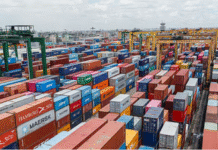
After failing to get a desired government job, Jakaria Lenin, an English literature graduate in Tangail, set up a cattle farm about 11 months ago.
With land and financial help from his father, he brought 44 bulls and 6 cows with an investment of Tk 65 lakh.
And he had earmarked 38 bulls for sale during this year’s Eid-ul-Azha celebrations. He has already sold 21 for Tk 22 lakh.
“If I can sell all 38 bulls, I will be able to make a profit of a few lakh taka,” said Lenin.
India’s crackdown on cattle smuggling prompted him to engage in cattle farming as the demand for the local animals has increased in recent years, said Lenin.

Cattle farming is a new phenomenon gaining ground among literate youths in the country ever since neighbouring India in 2014 clamped down on putting an end to cattle being smuggled to Bangladesh.
“This ended up making Bangladesh self sufficient in cattle rearing,” Shaikh Azizur Rahman, director general at the Department of Livestock Services (DLS), told The Daily Star. “Before, we had to rely on Indian cows during Qurbani season, but locally reared bulls met the demand the past four Eid celebrations,” he added.
Prior to India’s increased vigilance, a lion’s share of the cattle would be raised using traditional methods by farmers in villages.
But now many educated youths and traditional farmers have started putting emphasis on high quality breeds through artificial insemination.
According to the DLS, which started gathering statistics on fattened bulls a couple of years ago, there were 33.42 lakh fattened bulls in the country in 2017.
It increased around 16 per cent to 38.58 lakh in 2021.
Before India’s crackdown at borders to prevent smuggling of cattle, Bangladesh depended on the entry of about 20 lakh cows annually from the neighbouring country.
The clandestine business started facing curbs since 2015, leading to a gradual decline in the flow from India.
Data from the National Board of Revenue (NBR) showed that the number of cattle brought over informally over the borders was 21 lakh in fiscal 2013-14.
Six years down the line, the flow dipped 90 per cent. In fiscal 2019-20, the figure was 2 lakh, down from 5.42 lakh the previous year, showed data from the NBR.
The slump fuelled prices of beef locally, only to encourage farmers to expand to livestock rearing.
“We want to thank the Indian government as it helped the local livestock industry to flourish,” said Rahman.
According to the DLS, there are 6.98 cattle farmers in Bangladesh, up from 3 lakh in 2015.
“In 2009-10, Bangladesh produced about 13 lakh tonnes of meat, which increased to over 75 lakh tonne in 2019-20,” he said.
He said the government went out extensively to provide training to the farmers, teaching them how to perfectly raise cattle at low expense.
“We have already attained self-sufficiency in meat production and now we are focusing on increasing milk production with high quality breeds,” he added.
Bangladesh produces around over 40 lakh artificially inseminated cattle per year, he added.
Abdul Latif, a traditional cattle farmer in Kalihati upazila in Tangail, was fattening one bull and raising some six cows for milk decades ago.
“But in last the 5 to 6 years, I started fattening at least eight bulls per year as the demand for such bulls skyrocketed in recently years,” said Latif.
“This year I have fattened 12 medium and large bulls targeting this Eid,” he said.
Boosted by success stories in dairy farming, Shahidul Islam Razu entered the business three years back after passing out from a government college in the capital. Last year, he sold all of his 24 cattle and pocketed a profit of Tk 7-8 lakh.
This year, his Modern Dairy Farm in Keraniganj reared 60 cattle. Of them, 40 have already been sold at Tk 50 lakh.
“If all get sold, the total price will be Tk 80 lakh and profit over Tk 12 lakh,” said Razu, adding that he was certain that his bulls would be sold out before Eid as many customers have shown interest in making a purchase from his farm.
However, he said making an annual profit of only Tk 15 lakh with an investment of Tk 80 lakh was not that lucrative to many. Many of the new entrepreneurs of the sector are leaving for good.
“This is because the price of feed increases every year. It is difficult to survive in this business without the government taking urgent step in reducing the price of the feed,” he said.


 For all latest news, follow The Daily Star’s Google News channel.
For all latest news, follow The Daily Star’s Google News channel. 







